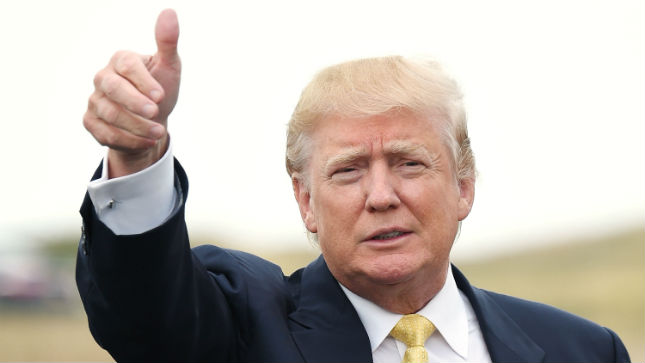Trump TV.
We’ve seen more about it as Donald Trump’s chances at winning the presidency continue to look like less of a possibility. But if the Republican nominee isn’t occupying the White House and instead is looking to stay front and center in the media world on a network with his name on it, here’s one simple question:
Can it actually work? If so, what would it look like?
{mosads}The answer depends on what kind of network/channel Trump TV would want to be.
If TTV wants to compete with Fox News, CNN and MSNBC in the cable news space, that will require considerable investment.
How considerable? Try hundreds of millions of dollars to start.
The reason is simple: All of those outlets aren’t just about political opinion and debate. Yes, all are especially heavy on it now, given there’s an election in two weeks. But come late November after everything returns to however normal is defined these days, the news divisions of each will gain back a noticeable chunk of the on-air stage again, particularly from morning until early evening for the most part.
But to build a news division, that takes serious coin.
Anchors and reporters stationed working in shifts 24/7 around the country and world cost money. Writers, editors, producers and directors cost money. Pundits/contributors cost money. State of the art studios and newsrooms — particularly in Manhattan at the center of the media universe — cost lots (and lots and and lots and lots) of money. Satellite feeds cost money. Hiring successful, experienced people who have run these kind of networks before costs lots (and lots and lots) of money.
Add it all up, and we’re talking hundreds of millions of dollars for Trump TV to exist in a traditional cable news format. And after an expensive campaign where Trump has shown little inclination to dip into his own pocket, he’ll likely have to depend on outside investment.
Remember, Fox News is underneath the huge 21st Century Fox umbrella. Time Warner (and possibly eventually AT&T) owns CNN. Comcast owns MSNBC. That’s billions in money and tons of resources. Trump TV would essentially be starting from scratch without those kind of engines behind it.
And then there’s the challenge of revenue generation.
“There’s a little issue of advertising,” Sandy Grushow, former chairman of the Fox Television Entertainment Group, told CNBC in an interview last week. “Most big brand advertisers would avoid it like the plague. The last thing anyone is looking for is controversy for fear of being boycotted.”
There’s also the issue of recent precedent: Al Jazeera America went off the air last year after losing more than $500 million in its two years of existence. $500 million! Trump TV would be a much different offering ideologically, that’s understood. But what Al Jazeera America showed despite doing some exceptional news-gathering and investigative journalism was just how fractured and competitive the media landscape in 2016 could be.
When MSNBC and Fox News jumped in to compete with CNN in 1996, there were no streaming options, YouTube channels and 500 regular channels to choose from on traditional TV. That’s all changed now. And to rise above all of that noise and smoke is an extremely difficult task, even with a ratings magnet like Trump on board.
So with Trump TV unlikely to be a true competitor to Fox, CNN and MSNBC without major investors coming forward, the more foreseeable route for such a network would be what we’ll be seeing for the next two weeks until Election Day:
Trump TV online.
The Glenn Beck model comes to mind after he and Fox News parted ways in 2011: A subscription model for about $10 per month to view his channel online. Beck would generate $40 million in revenue in his first year of operation alone.
An online channel for Trump would likely also be strictly one where the offering is editorial-only. News divisions therefore wouldn’t be needed.
Think of AM talk radio instead: All opinion, all the time, with an hourly two-minute news brief at the top of the hour. Such a channel would be much cheaper to start up and operate, yes, but filling the hours with compelling hosts to attract viewers not under contract (and not asking for tens of millions of dollars) would present another big challenge.
So can that work for Trump? Probably. Although without the stakes of a general election surrounding him and no opponent in Hillary Clinton to trade jabs with on a campaign trail, it’s a fair question to ask if Trump will struggle even in an online subscription model considering how things went for Sarah Palin when she launched her own channel with the backing of TAPP TV (headed up by former CNN president Jonathan Klein and former NBC Universal Television Entertainment chairman Jeff Gaspin).
Quick review: After going live in 2014, Palin’s channel didn’t even make it to its first anniversary. For Trump to succeed, he’ll need one hell of a supporting cast around him to keep eyeballs there when he isn’t around.
Who those players are to fill the roster is anybody’s guess. And whether they’ll take such a risk is an even bigger one.
Either way, if Donald Trump doesn’t defy the polls and win the White House, Trump TV is a real possibility.
Where and when you’ll be seeing it and what it looks like are three entirely different stories altogether.
